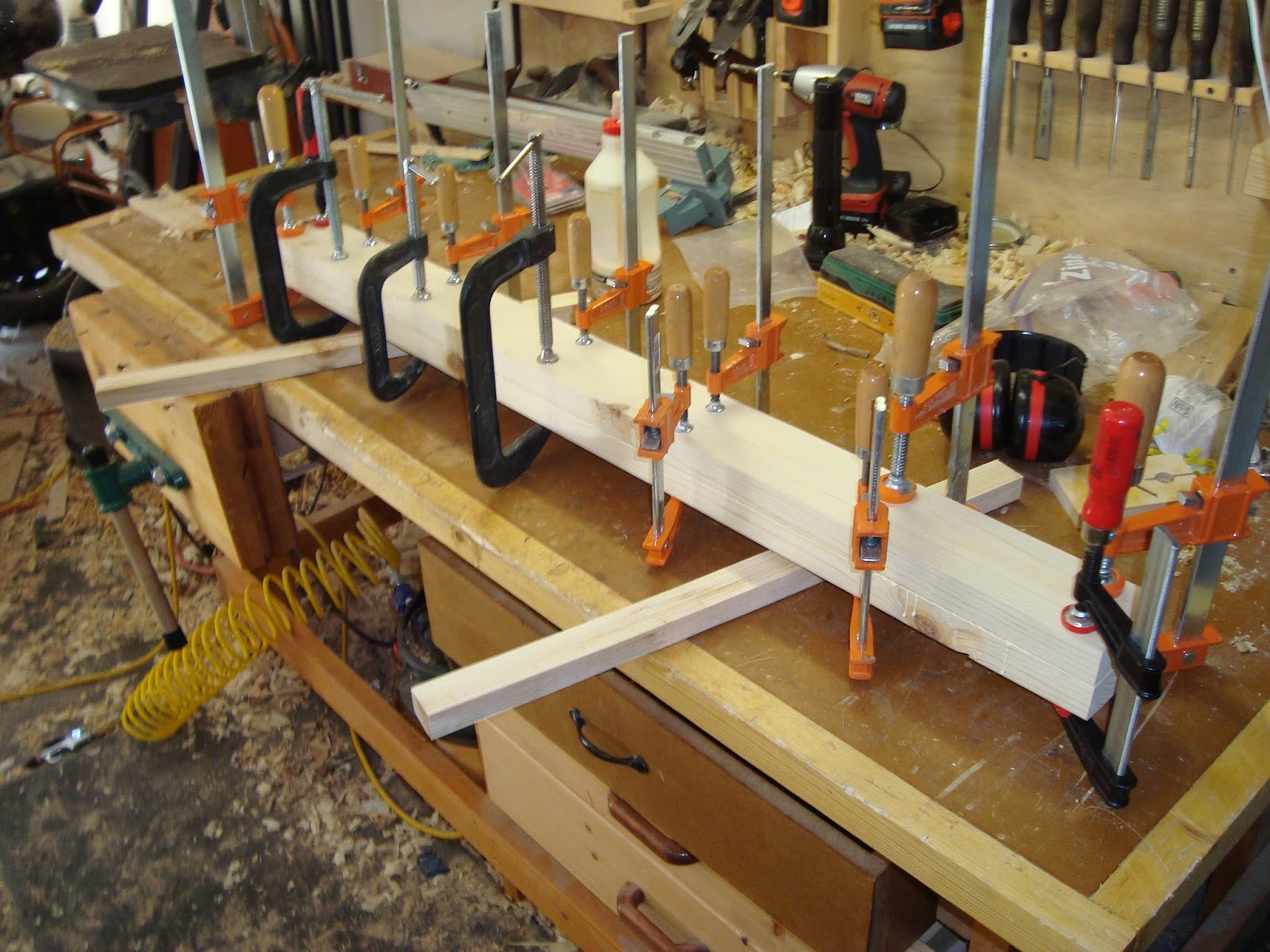Since my shop is a standard 2 car garage and was never intended for anything other than storage by its original builders, it only had one built in light fixture. The single 2 bulb 48 inch fluorescent fixture that's positioned near the center of the room was not enough light even when I was just getting started in the shop, so I quickly added a hanging shop light style fixture over my main workbench. This is also a 2 bulb 48 inch fluorescent fixture.
 |
| Original light |
|
 |
| Hanging light over workbench |
|
Upgrading my shop lighting has been on my list of projects for a while, but it has fallen back to the bottom of the list time and time again. But I finally decided to make time to get some better lighting. I started out by marking out some positions where I wanted the lights to go on the ceiling. Then I attached a fixture by one screw, marked the center where I needed to make a hole in the ceiling, then slid the light over and traced the size of a ceiling electrical box on the ceiling and cut this out with a drywall saw.
Then I went up into the attic and installed some blocking in between the ceiling joists in order to have something to mount my electrical box to. I attached this blocking with screws, toenailing them into the joists.
I turned off the breaker, then ran 12-2 wire to the existing light's electrical box to tie in. There is plenty of current on this circuit since it was only the one light fixture originally.
Yes, if you're wondering, the drops in the above pictures are sweat. What can I say? It's summertime in Arkansas so it's HOT in this attic even in the evenings when I'm doing this work. Hooking up one of these lights is really simple. I connect it to the new fixture with wire nuts and to the existing fixture and incoming current lines with wire nuts as well. Here's some pictures of the first new fixture installed.
I repeated the process with another more identical fixture over on the other side of the shop where we normally park the car.
I could not find an angle to take a picture that showed all the fixtures. And since I didn't take any before and after type shots, it's hard to tell just from the pictures what an amazing improvement in the level of light I gained from doing this project.
If you think you might not have enough light in your shop, do some sort of upgrade right now! The cost pales in comparison to just about any new tool or piece of equipment you might be considering. The increased light has helped the quality of my work, and I feel the brighter surroundings even improve my mood while working in the shop. I only wish I'd done it sooner!





































